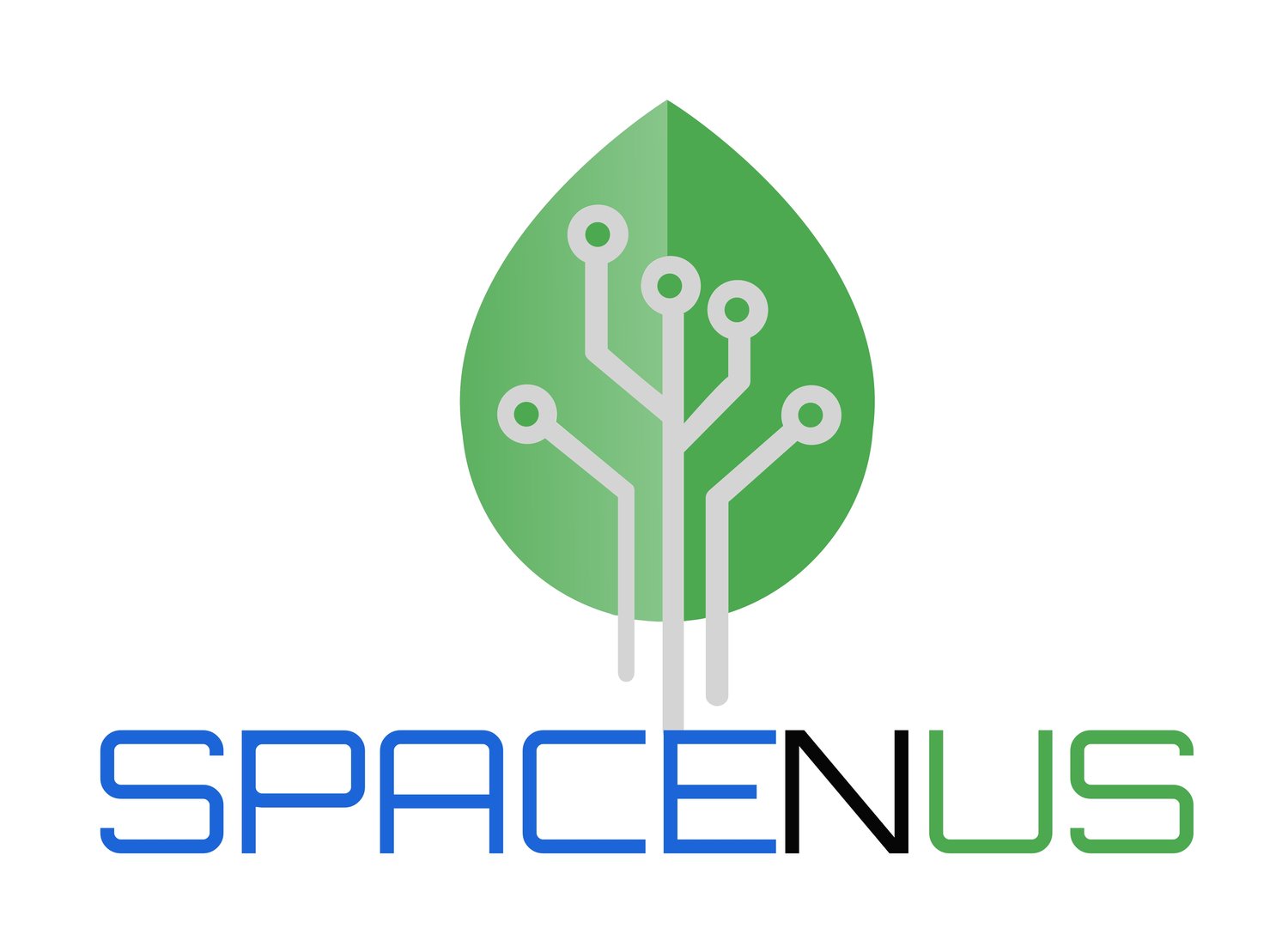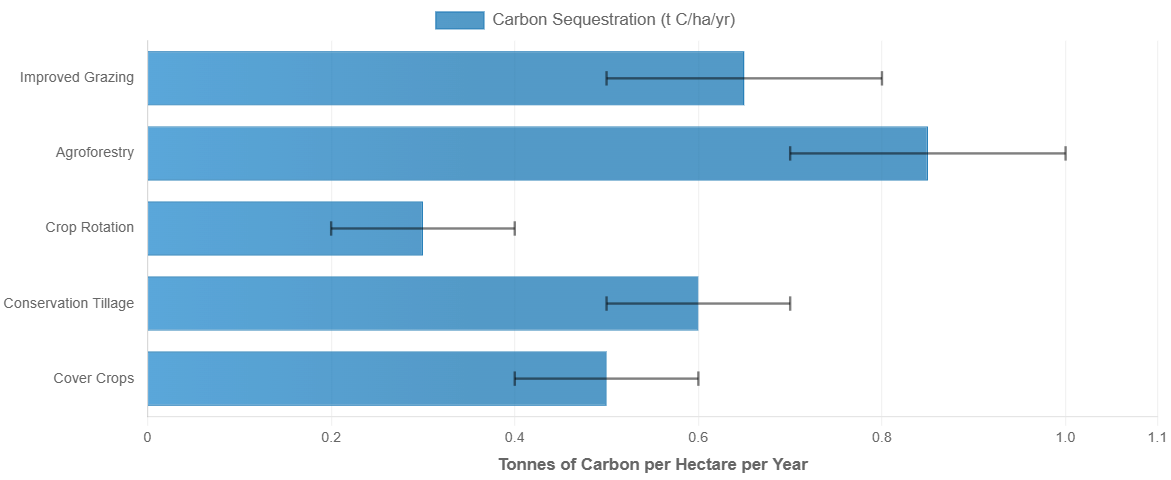Carbon Farming: How does it contribute to achieving net-zero?
There is an unprecedented focus on developing robust carbon removal strategies to achieve net-zero emissions globally. While technological solutions are in the headlines, one of the most promising approaches is literally under our feet: carbon farming. At the recent 2ⁿᵈ European Carbon Farming Summit in Dublin (March 4-6, 2025), more than 1,000 stakeholders from the agricultural sector came together to discuss how carbon farming can effectively scale up to meet our climate goals. This blog explores key insights from the summit and examines how carbon farming can play a key role in achieving net-zero ambitions, with the help of advanced monitoring technology developed by Spacenus.
Understanding the Potential of Carbon Farming
Carbon farming involves agricultural practices that sequester carbon dioxide from the atmosphere and store it in soil organic matter, helping to mitigate climate change and improve soil health and agricultural productivity. At the summit, experts highlighted that agricultural soils are one of our most scalable carbon sinks, with the potential to sequester 0.9 to 1.85 Gt CO₂e annually – the equivalent of taking around 400 million cars off the road each year.
The following chart illustrates the carbon sequestration potential across different agricultural practices:
Key Insights from the 2ⁿᵈ European Carbon Farming Summit
1. Beyond Carbon Sequestration
A central theme at the Dublin summit was that carbon farming must move "beyond sequestration" to deliver multiple benefits. Christian Holzleitner from the European Commission emphasized in his opening speech that while carbon capture is vital, successful carbon farming initiatives must also address biodiversity, water quality, and soil health.
This is fully consistent with the Spesnus approach to regenerative agriculture, where mapping our soil organic carbon (SOC) not only measures carbon stocks but also provides insights that can increase overall soil health and agricultural productivity.
2. MRV Challenges and Solutions
The Summit’s discussions revealed that proper monitoring, reporting and verification (MRV) is one of the biggest challenges in scaling up carbon farming. According to data presented at the Summit, MRV costs currently represent 25-40% of carbon project costs, creating a significant barrier to entry for small farms.
Spacenus directly addresses this challenge through our satellite-based MRV approaches. Our three-step SOC mapping process reduces the number of soil samples required by up to 70% compared to traditional grid sampling methods, while maintaining compliance with standards like Verra (VM0042) and Gold Standard.
3. Policy Framework Developments
The EU Carbon Removal Certification Framework (CRCF) was a central topic of the summit. The framework aims to establish clear certification standards for carbon farming initiatives, creating a more reliable market for carbon credits. Summit speakers noted that with proper implementation, the CRCF could mobilize €30-50 billion in carbon farming investments across Europe by 2030.
The Economics of Carbon Farming
The economics of carbon farming were examined in depth at the summit. The research presented showed that while implementation costs vary according to practice, carbon farming initiatives often become profitable within 3-5 years through a combination of the following:
Reduced input costs (particularly nitrogen fertilizers)
Improved yields through enhanced soil health
Income from carbon credits
Premium pricing for sustainably produced products
The following table illustrates the financial impacts observed in European case studies presented at the summit:
How Spacenus Solutions Support Carbon Farming at Scale
The summit highlighted that successful carbon farming requires integrated approaches that combine accurate measurement, farmer engagement, and ecosystem-wide collaboration. Spacenus addresses these needs through our comprehensive suite of solutions:
1. Precision Nitrogen Management
Nitrogen fertilizer represents both a significant cost to farmers and a major source of agricultural emissions. Our Precision Farming solutions leverage Sentinel-2 satellite data to optimize nitrogen application, reducing emissions while improving yields. Case studies presented at the summit showed that optimized nitrogen management can reduce emissions by 0.5-1.5 tCO₂e per hectare annually while saving farmers €20-50 per hectare in input costs.
2. Soil Organic Carbon Measurement
Our Regenerative Farming solutions provide accurate, cost-effective SOC mapping that establishes reliable carbon baselines and monitors changes over time. This addresses what summit speakers identified as the primary technical barrier to scaling carbon farming: the lack of accessible, affordable MRV systems.
3. Unified Stakeholder Engagement
The summit emphasized that carbon farming success depends on connecting all value chain participants. Our Sustainability Platform creates a unified ecosystem where food companies, farmers, and carbon project developers can collaborate effectively. This addresses the fragmentation challenge highlighted at the summit, where siloed efforts have limited carbon farming's scalability.
Scaling Carbon Farming in European Agriculture
At the summit, several European case studies demonstrated the scalability of carbon farming with appropriate technology. A notable example was 2,500 hectares across northern France where precision nitrogen management was achieved in combination with cover cropping:
22% reduction in nitrogen fertilizer use
0.8 tC/ha/year additional carbon sequestration
15% improvement in water retention capacity
€45/ha net economic benefit to farmers (excluding carbon credits)
Spacenus integrated solutions support similar initiatives, with the potential to scale up these benefits. Our satellite-based approach enables simultaneous monitoring across millions of hectares, making large-scale implementation and verification possible.
The Path Forward: From Summit Insights to Practical Implementation
The 2ⁿᵈ European Carbon Farming Summit revealed both the immense potential and remaining challenges in scaling carbon farming as a net-zero strategy. Key action items emerging from the summit include:
Standardizing MRV methodologies to reduce costs while ensuring scientific rigor
Developing integrated business models that value multiple ecosystem services
Enhancing farmer engagement through accessible technologies and clear incentives
Aligning policy frameworks to support long-term carbon farming investments
Spacenus is proactively addressing each of these priorities through our technology solutions and partnerships. By providing farmers with accessible, accurate carbon measurement tools and actionable insights, we are helping to bridge the gap between the theoretical potential of carbon farming and practical implementation at scale.
Carbon Farming's Essential Role in Net-Zero
Insights from the 2ⁿᵈ European Carbon Farming Summit make it clear that agricultural soils represent one of our most promising and immediately available carbon sinks. With proper implementation, carbon farming could contribute 10-15% of Europe's required emissions reductions by 2050 while simultaneously improving agricultural resilience and productivity.
At Spacenus, we're committed to making this potential a reality through innovative technological solutions that make carbon farming accessible, verifiable, and profitable. By connecting satellite technology with on-the-ground implementation, we're helping to transform European agriculture from a carbon source to a carbon sink – a transformation that will be essential to achieving our net-zero ambitions.
To learn more about how Spacenus can support your carbon farming initiatives, contact us today.


